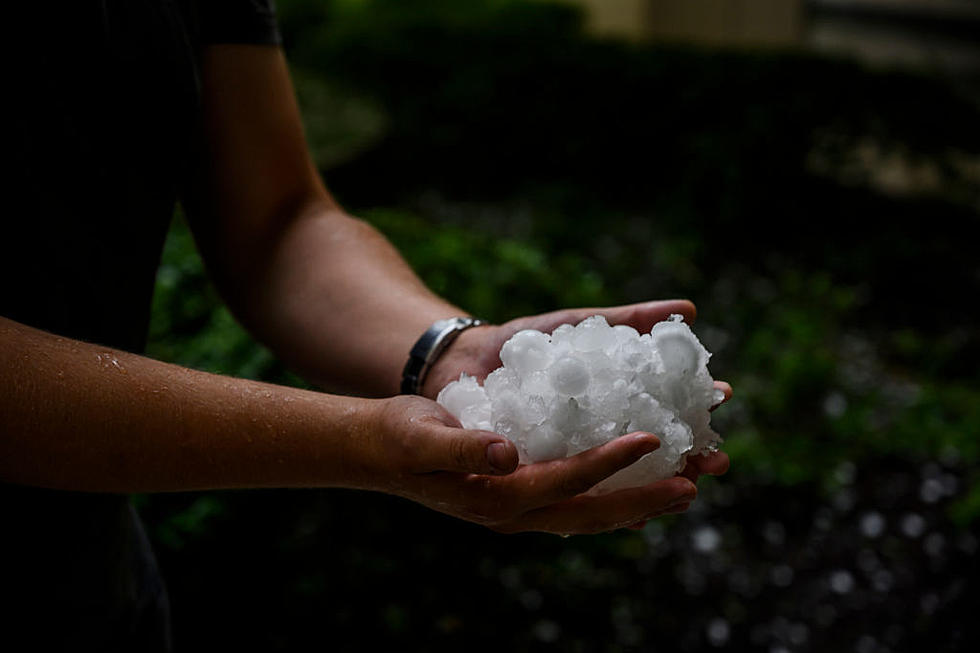
The Largest Hailstone Recorded in Massachusetts Was This Big
Lots of folks get confused when talking about sleet and hail. Some think the terms to be interchangeable, as though they are the same frozen precipitation with just different names.
Au contraire!
Sleet and hail are two entirely different weather phenomena.
According to the Old Farmer's Almanac, sleet is partially frozen rain, measuring less than 5 mm (0.2 inches) in diameter. Hail, on the other hand, is a round piece of ice that usually falls during thunderstorms.
The Almanac says of hail, "Its average size is 0.25 or 1/4 inch in diameter, although hailstones weighing up to seven pounds have been recorded."
According to AllThingsNature.com, "Sleet and hail may look similar, but the formation of sleet is quite different, and explains why sleet is more often a winter phenomenon."
The site says, "Clouds that might produce sleet are warmer than the air below and don't have significant updrafts." When sleet falls from the clouds, it is in liquid form. But "the temperature of the air, as the rain falls from the clouds, is cold enough to freeze it on the way down."
Hail begins at the bottom of the clouds. AllThingsNature.com says updrafts send raindrops towards the top of the thunderheads, where the temperature is cool enough to cause the raindrops to freeze." Updrafts force the hail "to swing up to the colder top of the clouds several times," adding new layers to the hailstones.

WeatherUnderground says, "Hail accumulated almost 18" deep on-level in Seldon, Kansas, on June 3, 1959, perhaps the greatest on-level hail accumulation on record in the U.S."
The areas of the country most likely to experience hailstorms (especially those that produce very large hail) "are somewhat similar to the areas most affected by tornadoes." In those areas, golf ball-sized and even grapefruit-sized hail can occur.
HailSpecialists.com says the largest hailstone recorded in Massachusetts was a four-inch hailstone spotted in Berkshire County on June 1, 2011.
Citing a report from the National Climatic Data Center, WCVB.com says, "The largest hail reported in the state since 1950 (when records began) fell in Essex County in 1965." It measured 3.5 inches.
The National Weather Service categorizes three-inch hail as large apple-sized and four-inch hail as softball-sized.
KEEP READING: Get answers to 51 of the most frequently asked weather questions...
LOOK: The most extreme temperatures in the history of every state
More From WBSM-AM/AM 1420









